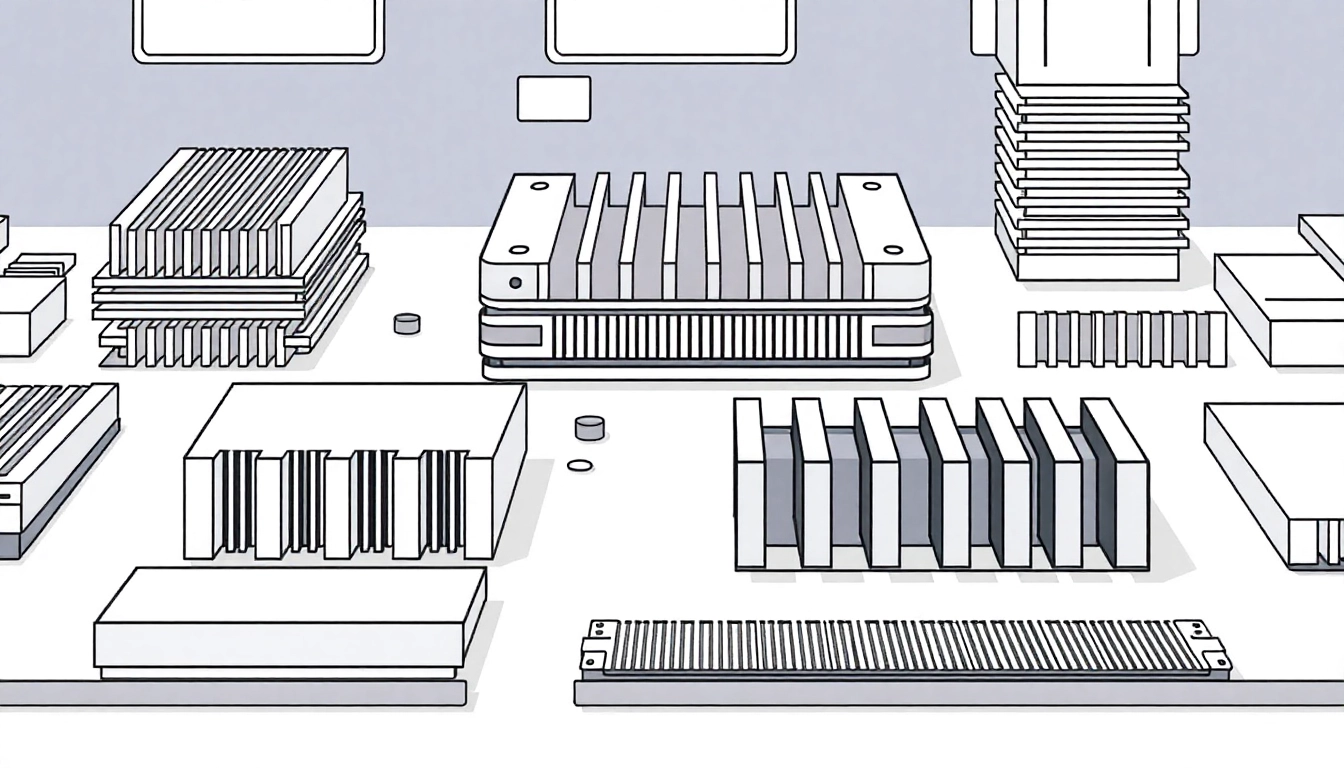Understanding Thermal Management Materials
Definition and Importance
Thermal management materials are critical components in various electronic applications, designed to effectively manage heat dissipation. As electronic devices become smaller and more powerful, the challenge of thermal management grows significantly. Effective thermal management ensures optimal performance, reliability, and longevity of electronic components, preventing overheating that can lead to device failure. Without the proper use of thermal management materials, the risk of overheating increases, which can degrade performance and lead to premature device failure.
Types of Thermal Management Materials
There are several categories of thermal management materials, each designed for specific applications and environments:
- Thermal Interface Materials (TIMs): These materials fill the microscopic air gaps between a heat source and a heat sink, improving thermal conductivity and heat dissipation.
- Gap Fillers: Designed to fill larger gaps, these materials provide efficient thermal conduction while accommodating surface irregularities.
- Phase Change Materials (PCMs): These materials absorb and release thermal energy during phase transitions, providing effective thermal regulation.
- Thermal Adhesives: Combining bonding and thermal conductivity, these materials serve dual purposes in electronic assemblies.
- Thermal Tapes: These pressure-sensitive adhesives are used for attaching heat sinks and other thermal management components.
Applications in Electronics
Thermal management materials are utilized across a broad spectrum of electronic applications, including but not limited to:
- Consumer Electronics: Smartphone, laptop, and tablet manufacturers use various thermal management materials to prevent overheating.
- Automotive Electronics: With the rise of electric vehicles, the need for reliable thermal management systems is paramount.
- Telecommunications: High-frequency communication devices require efficient heat dissipation to maintain performance levels.
- Data Centers: As servers generate substantial heat, effective thermal management solutions are critical for ensuring uptime.
Key Properties of Thermal Management Materials
Thermal Conductivity Explained
Thermal conductivity is the ability of a material to conduct heat. It is one of the most critical properties of thermal management materials, influencing how effectively they can dissipate heat. Materials with higher thermal conductivity, such as metals like copper and aluminum, are commonly used for heat sinks. Conversely, materials like silicone-based TIMs provide effective thermal transfer while offering versatility in application.
Durability and Reliability Factors
Durability is essential for thermal management materials. Factors like thermal cycling, moisture exposure, and mechanical strain can all affect performance over time. Reliable materials maintain their thermal properties under various operating conditions, ensuring long-lasting equipment performance. For example, silicone thermal interface materials are known for their resilience against temperature fluctuations, making them ideal for automotive and aerospace applications.
Material Composition and Variations
The composition of thermal management materials can vary significantly, leading to different thermal properties. For instance:
- Graphite: Known for its high thermal conductivity, it’s often used in heat spreaders.
- Polymers: More flexible and can be designed for specific thermal performance needs, such as thermal pastes or pads.
- Metal-based compounds: Solder and metals (like silver or copper) are often used for higher-budget applications where maximum thermal conductivity is required.
Choosing the Right Thermal Management Materials
Assessment Criteria for Selection
When selecting thermal management materials, several criteria should be evaluated:
- Thermal Performance: Assess the moisture resistance, thermal conductivity, and thermal resistance metrics.
- Mechanical Properties: Consider the tensile strength and elongation to ensure durability in application.
- Compatibility: Ensure the materials are compatible with the components in question, specifically regarding adhesion and chemical resistance.
- Cost-Effectiveness: Analyze the costs relative to performance to find the best value for specific applications.
Common Challenges and Solutions
Selecting the right thermal management materials can present several challenges:
- Integration Difficulty: Some materials can be challenging to integrate into existing designs. A solution is to work with suppliers who offer customized solutions that fit specific applications.
- Performance Degradation Over Time: To combat this, conduct rigorous testing during the design phase to ensure materials hold up under expected conditions.
- Cost Constraints: Buy in bulk or look for alternatives that still meet required thermal specifications without exceeding budget limits.
Best Practices for Material Application
Implementing thermal management materials effectively requires adherence to best practices:
- Ensure thorough surface preparation prior to applying thermal interface materials to maximize adhesion and performance.
- Apply materials uniformly to avoid hotspots caused by uneven distributions.
- Follow manufacturer guidelines for application techniques, thickness, and cure times to avoid premature failure.
Innovations in Thermal Management Technologies
Emerging Trends in Materials Science
The field of thermal management is evolving, with research exploring novel materials and technologies. One significant trend is the use of nanomaterials, which can enhance thermal conductivity while reducing weight. Companies are also investigating biomimetic materials inspired by natural processes that optimize heat dissipation, showcasing the blend of nature and technology in modern engineering.
Future of Thermal Interface Materials
As technology continues to advance, the future of thermal interface materials (TIMs) looks promising. Innovations such as 3D-printed TIMs allow for custom shapes and improved performance tailored to specific components. The incorporation of artificial intelligence in material selection processes is expected to streamline the design and testing phases, ensuring optimal thermal management.
Case Studies of Successful Implementations
Numerous success stories highlight the impact of effective thermal management materials:
- Electric Vehicles: A major automotive manufacturer implemented advanced gap fillers and thermal pads in their EV battery systems, resulting in a significant reduction in overheating incidents and increased overall battery life.
- Consumer Electronics: A leading smartphone company adopted a new silicone-based thermal interface material that improved heat dissipation by 30%, enhancing device performance under heavy usage conditions.
Measuring Performance of Thermal Management Solutions
Key Performance Indicators (KPIs)
To evaluate the effectiveness of thermal management materials, organizations should track the following KPIs:
- Temperature Stability: Monitor the maximum operating temperature under load to assess material performance.
- Thermal Resistance: Measure the thermal resistance values to ensure they meet or exceed design specifications.
- Durability Metrics: Track any changes to the material properties affecting performance over time.
Testing Methods and Standards
Robust testing methods are crucial for validating the performance of thermal management materials. Common practices include:
- Dynamometer Testing: Used to simulate real-world thermal conditions in controlled environments.
- Thermal Shock Testing: To evaluate how well materials withstand rapid temperature changes.
- Long-term Aging Tests: Assessing how materials perform over extended periods under operational conditions.
Feedback Loop for Improvement
Implementing a feedback loop to assess the performance of thermal management solutions can drive continuous improvement:
- Gather performance data during testing and real-world applications to refine material choices.
- Engage with customers to understand their experiences and gather insights regarding material performance and challenges.
- Collaborate with R&D teams to innovate and stay ahead of market demands.



